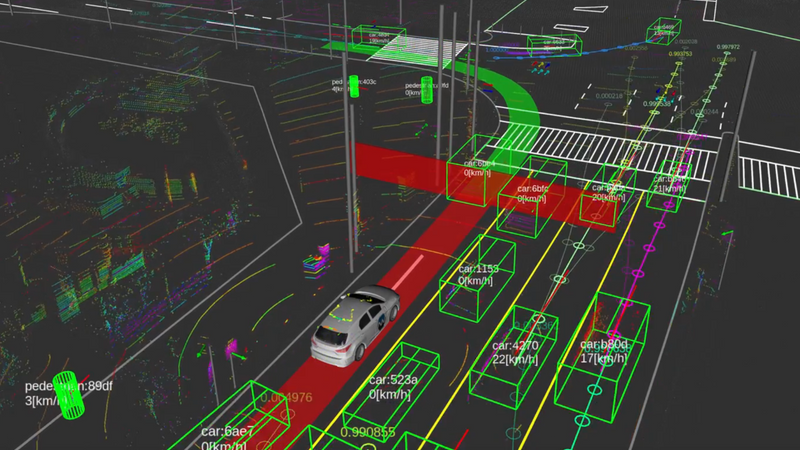2023 Autonomous Vehicle Report Interview: Advancing Open-Source Development in the Automotive Industry
In this interview, Samet Kütük, a board member of the Autoware Foundation - the partner of this report - shares the crucial role of open-source initiatives for autonomous driving
In this interview, Samet Kütük, a board member and Marketing/Go-To-Market working group chair of the Autoware Foundation and CTO and co-founder of Leo Drive, shares insights with Ian Dickson into his eight-year journey developing level four autonomous vehicles. He discusses the crucial role of the Autoware Project, the world’s leading open-source initiative for autonomous driving. Autoware is the partner of the 2023 Autonomous Vehicle Report. Download the report to read more interviews.

Can you give us an introduction to what Autoware is?
Samet Kütük: The Autoware Project originated in 2015 at Nagoya University in Japan, initiated by Professor Shinpei Kato. Following its foundation the next year, Autoware has grown into being the world’s leading open-source project for autonomous driving, boasting more than 70 members, including many prominent companies working on autonomous vehicle technology, as well as 23 university partners.
How does one become a member of Autoware?
Samet Kütük: Autoware is an open-source project hosted on GitHub. Individuals or companies interested in joining can explore the codebase on their own. If they wish to engage further, they can reach out to us. The board evaluates the potential value of new members, offering different membership packages, including premium memberships and industry memberships, with varying fee structures for annual participation.
Why is the Autoware project open source?
Samet Kütük: The Autoware project adopts an open-source approach to address issues related to proprietary solutions. Many players in the industry follow proprietary models, which lack transparency and can create barriers for vehicle manufacturers (OEMs) and any potential autonomy users. Autoware’s open-source nature simplifies onboarding for OEMs, making the process more straightforward and cost-effective. This approach also allows for concept validation without heavy initial investments, providing a flexible and accessible platform.
Does Autoware accelerate the development of autonomous vehicles?
Samet Kütük: Absolutely. Autoware not only accelerates development but also aligns with the software-defined vehicle paradigm, emphasizing openness and transparency. Collaborative frameworks like Eclipse SDV and SOAFEE indicate a move towards more open approaches in the industry. Autoware’s open ecosystem facilitates collaboration between applications and hardware, enabling a smoother development process. Can you tell us more about the Robot Operating System (ROS)?
Samet Kütük: Autoware is built on the Robot Operating System (ROS), a middleware with a wide audience. ROS simplifies system understanding and offers a direct path to product development. The flexibility extends to operating systems, with partnerships with major companies like Arm, providing custom builds to support the architecture. ROS plays a crucial role in data exchange, connecting vehicle components, sensors, and the operating system.
What feedback have you received from people and members who’ve used the operating system?
Samet Kütük: Member companies, including Leo Drive, develop autonomous solutions using generic Linux distributions for operating systems. While generic Linux distributions are suitable for initial development, some companies choose more specialized OSs, for production-ready systems once prototyping for concept validation is complete. Autoware project also has a direct path to use safety-capable operating systems of which we are discussing with our alliance partners. Where do you think we are with autonomous vehicles at the moment?
Samet Kütük: Assessing the current state of autonomous vehicles is challenging. Even well-funded companies, like Argo.AI and Cruise, face difficulties, leading to operational restrictions, or closing shop. Regulatory uncertainties, especially for autonomous vehicles operating in densely populated urban areas, present significant hurdles. However, there are already significant success stories in geo-fenced applications in controlled environments, such as ports and warehouses.
What’s your vision for the future of autonomous vehicles? Do you think geo-fenced areas will be the first application?
Samet Kütük: Personally, I see good adoption in geo-fenced and controlled environments. While robo-taxis are not excluded from the future, regulatory compliance is a priority. Beyond regulation, technology development poses challenges, especially in diverse environmental conditions. Success stories are emerging in controlled environments, addressing transportation gaps and contributing to a greener planet.
How do you believe autonomous vehicles will benefit society?
Samet Kütük: Autonomous vehicles offer numerous societal benefits, including reduced road accidents caused by human factors. Shared mobility can fill transportation gaps, leading to fewer vehicles on the road, decreased traffic congestion, and lower greenhouse emissions. The positive impact extends to creating a more sustainable and environmentally friendly planet.
What else do we need to know about Autoware?
Samet Kütük: When considering Autoware, it’s crucial to understand that it is a full-stack software for autonomous driving, covering everything from vehicle and sensors to perception, localization, planning, and control. Autoware replaces human senses in a vehicle with sensors, transforming a traditional vehicle into a self-driving platform. Additionally, our commitment to the software-defined vehicle paradigm, through collaborations with external alliances like SOAFEE, Eclipse SDV, AVCC , COVESA, and AUTOSAR is integral to our future endeavors.

